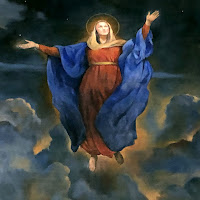Not only did they forbid English from adopting any Irish customs, manner of dress, language, or names; not only did they forbid Englishmen from riding horses in the Irish manner, and forbid intermarriage and even friendships, they even...
Forbade playing Irish sports:
VI. Also, whereas a land, which is at war, requires that every person do render himself able to defend himself, it is ordained, and established, that the common [people] ... do not, henceforth, use the plays which men call hurlings*, with great sticks and a ball upon the ground, ..., and other plays which men call coiting**; but that they do apply and accustom themselves to use and draw bows, and throw lances, and other gentlemanlike games, whereby the Irish enemies may be the better checked by the liege people and commons of these parts; and if any do or practise the contrary, and of this be attainted, they shall be taken and imprisoned, and fined at the will of our lord the king.
Forbade allowing Irish to become priests or monks:
XIV. Also, it is ordained and established that no religious house which is situate amongst the English be it exempt or not, shall henceforth receive any Irishmen to their profession, but may receive Englishmen without taking into consideration whether they be born in England or in Ireland;
Forbade Irish entertainment, lest they be spies in disguise:
XV. Also, whereas the Irish agents who come amongst the English, spy out the secrets, plans, and policies of the English, whereby great evils have often resulted; it is agreed and forbidden, that any Irish agents, that is to say, pipers, story-tellers, babblers, rimers, mowers, nor any other Irish agent shall come amongst the English, and that no English shall receive or make gift to such;
These and others created a line between the English and Irish that could not be crossed. Punishments of fines or imprisonment were severe. An Irishman who pastured his livestock on English-owned land could have his livestock seized.
Lionel did not have enough men to enforce these statutes; also, he left Ireland a year later to get married in Italy, and never returned. They did, however, help to keep the English and Irish at odds with each other for centuries.
Next: what about that "coiting"?
*"hurlings" as described clearly refers to the sport of hurling, still played today.
**"coiting" likely refers to quoits; Edward III had banned quoits in England in 1365 and urged the practice of archery instead. Even with the signing of the Treaty of Brétigny which (so far as anyone knew) ended the Hundred Years War, Edward still wanted the country prepared to go to war. In fact, he was planning to make Lionel King of Scotland, and that would require soldiers.




























